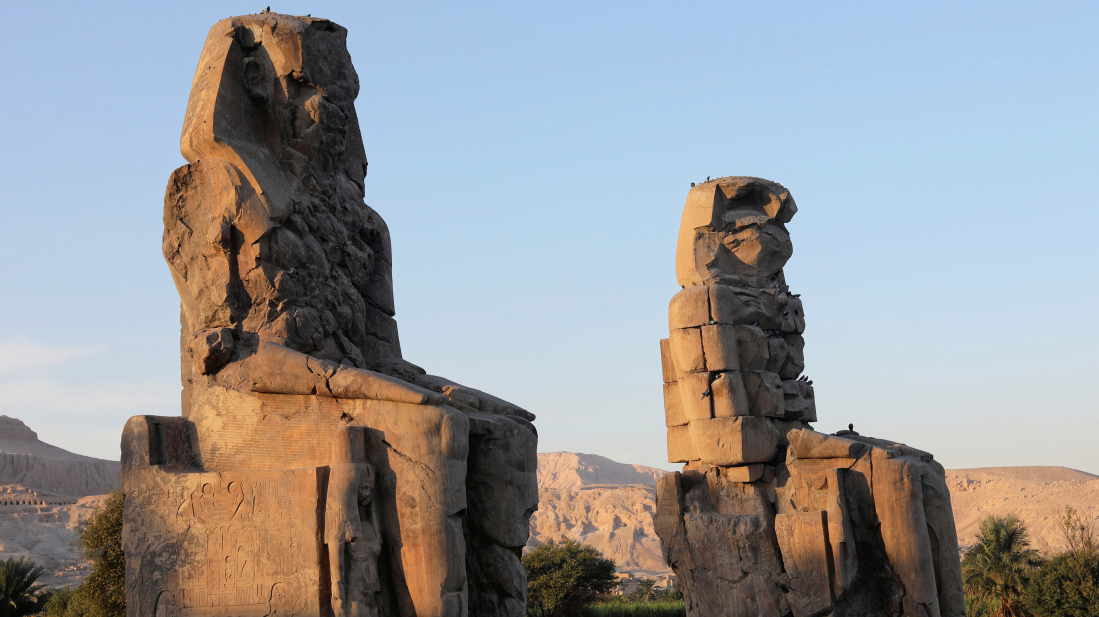Russian drones, missiles hit railway hub near Ukraine's capital, railway says
A railway hub near Kyiv was struck during a large-scale Russian drone and missile assault, damaging the depot and railway carriages, the Ukrainian sta...

Egypt has reopened the tomb of New Kingdom Pharaoh Amenhotep III in the Valley of the Kings, marking the end of a 20-year international restoration effort.
The tomb of Amenhotep III, who ruled Egypt more than 3,500 years ago, is located on the western side of the Valley of the Kings. First discovered in 1799, it was looted soon after, with its sarcophagus among the stolen artefacts.
Mohamed Ismail Khaled, secretary-general of Egypt’s Supreme Council of Antiquities, called the site “one of the most important and prominent” in the necropolis and said its reopening would be “an excellent addition” to Egypt’s cultural tourism.
The restoration, carried out in cooperation with Italian and Japanese experts, focused on conserving the tomb’s intricate wall paintings. The project unfolded in three phases between 2001 and 2024, with the final stage completed this year. Khaled said the vivid decorations and symbolic scenes inside the tomb reflect the artistic and cultural richness of Egypt’s New Kingdom era.
Amenhotep III ascended the throne as a teenager following the death of his father, Thutmose IV. His 40-year reign is often described as a golden age of stability and prosperity, during which he ruled largely from Thebes.
During the 21st Dynasty, his mummy was moved to the Royal Mummies Cache, later uncovered in 1898 in the tomb of Amenhotep II. His remains are now displayed at Cairo’s National Museum of Egyptian Civilization.
The 2026 FIFA World Cup draw at the Kennedy Center in Washington, D.C., has finalized the group stage for the tournament co-hosted by the U.S., Canada, and Mexico, setting the schedule and matchups for next summer’s expanded 48-team event.
Israel was cleared on Thursday to participate in the 2026 Eurovision Song Contest, a decision made by the organisers, the European Broadcasting Union (EBU), which sparked a major controversy.
Pakistan and Afghanistan exchanged heavy fire along their shared border late on Friday, a reminder of how sensitive the frontier remains despite ongoing diplomatic efforts.
Iran’s Foreign Ministry has strongly condemned the Gulf Cooperation Council (GCC) for its support of the claims by United Arab Emirates on three Iranian islands.
The United States plans to extend its travel ban to over 30 countries, U.S. Homeland Security Secretary Kristi Noem announced on Thursday.
Azerbaijan and Uzbekistan have strengthened their energy partnership with the launch of a joint exploration project in the Ustyurt region, highlighting growing strategic cooperation between the two countries.
China has sharpened its call for Japan to quicken the disposal of chemical weapons abandoned during the occupation period, framing the issue as a long-standing humanitarian, environmental and political responsibility.
Iranian Foreign Minister Abbas Araqchi is scheduled to visit Azerbaijan next week for talks with his counterpart Jeyhun Bayramov on bilateral relations and cooperation.
The 32nd Organisation for Security and Co-operation in Europe (OSCE) Ministerial meeting in Vienna exposed a sharp divergence between governance priorities in Brussels and Tbilisi.
President Kassym-Jomart Tokayev has held high-level talks with the European Council President António Costa In Astana.
You can download the AnewZ application from Play Store and the App Store.

What is your opinion on this topic?
Leave the first comment